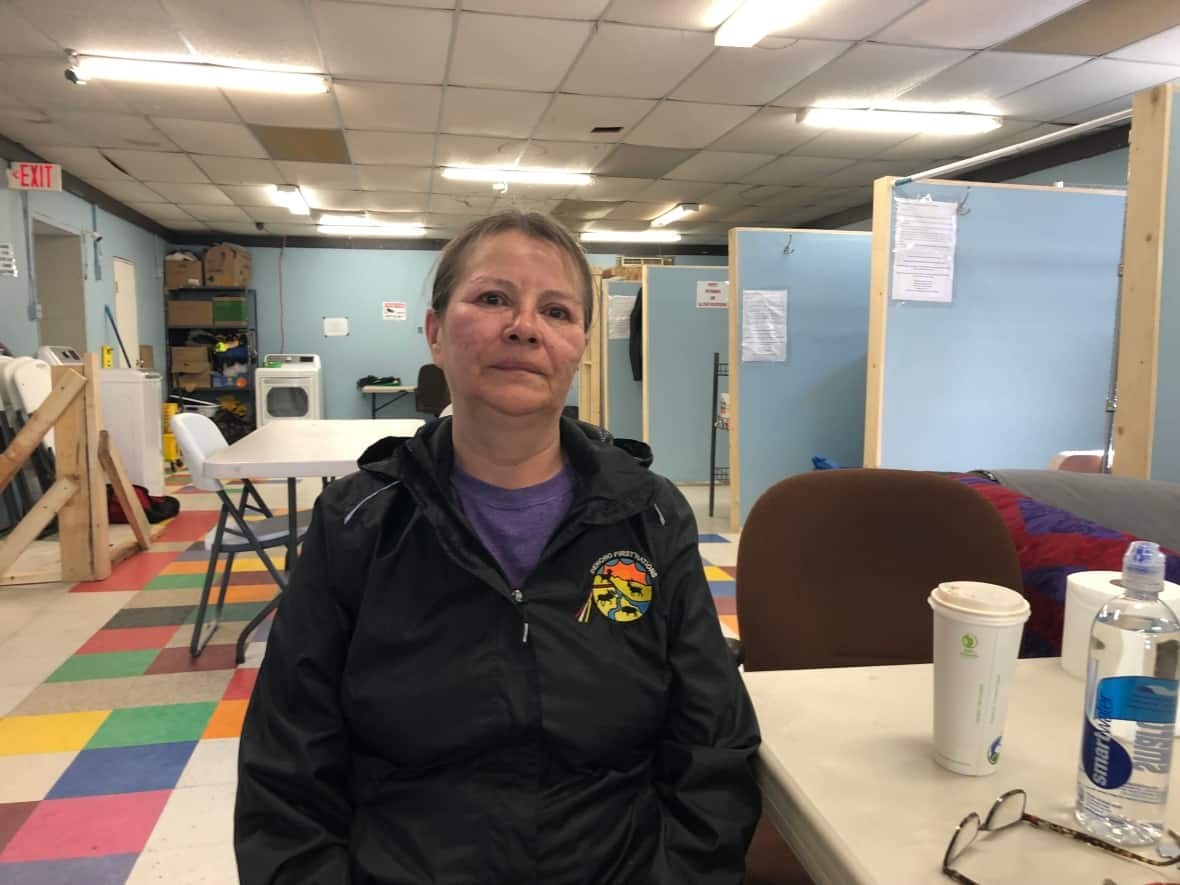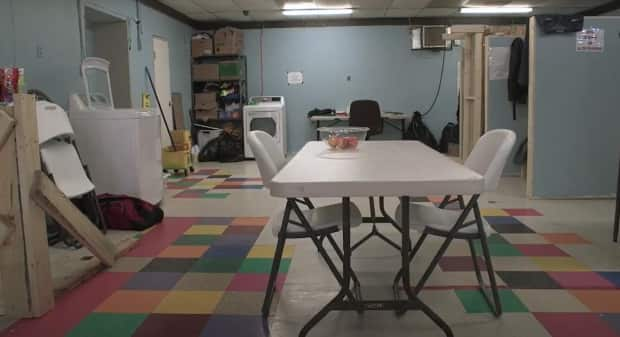Fort Simpson, N.W.T., residents worry about evacuation strategy ahead of spring breakup

On Monday morning Rosa Wright walked over the Unity Store in Fort Simpson, N.W.T., to grab herself a coffee — two days earlier, she worked 36 hours straight at the Fort Simpson warming centre, a community-run service that houses the homeless.
With the possibility of flooding during spring breakup, the village is completing surveys to gauge what people will do if the community has to be evacuated. For those who are homeless, own pets or have a complicated medical history, planning for an evacuation can be difficult.
None of the clients of the shelter completed the survey, so Wright had to fill it out for them.
"I'm just in pack up mode because of the flood," she said. "I'll be pretty much helping people who need things to set up."
In the community floods, some of the clients will stay in tents and volunteer. Those who can't will leave.

'Insulted' by treatment
When Ivan Johnson had to leave Fort Simpson on short notice during last year's flooding, he knew he needed to be near a hospital.
He has a pacemaker defibrillator in his chest and if he has an attack he needs to take a series of injections. If the injections don't work, he would need emergency medical assistance.

Being a 68-year-old man with a heart condition, he didn't want to wind up in a cot in the Fort Smith recreation centre, so he made his own way to Yellowknife where a friend put him up. Discussing their generosity left him emotional.
"When somebody takes you into their apartment and gives you their bedroom and the baby's bedroom and then feeds you," he said, trailing off.
Johnson had to travel himself and he was personally responsible for the approximately $3,000 flight.
"I'm not upset about it. I'm insulted by it," he said.
He applied to the territorial government to have the bill reimbursed, but said he was rejected.
No pets allowed
During the evacuation last year, Berna Norwegian and her sister Bertha needed a friend to look after their dogs.
That's because pets are not allowed on evacuation flights under the N.W.T. Emergency Plan.
Berna Norwegian's home was completely destroyed by last year's flooding and she's still waiting to move into her new home.
She said if there is a need to evacuate this year, she will stay in an RV off the island with her sister.
"Dogs are coming with us from day one," she said.

Sean Whelly, Fort Simpson's mayor, said the territorial government's evacuation strategy makes sense for young single people.
But for people with medical conditions, like Johnson, or pet owners, like Norwegian, it falls short.
For those who are homeless, finding themselves in a community with no connections can leave them in a difficult place, he said.
Food and shelter may be provided, but they no longer have access to some of their programs or something like cigarettes, which many in the homeless community are addicted to, and could find themselves experiencing withdrawal.
For others struggling with mental health issues, they may be safe in a cot in a gymnasium or recreation centre, but they won't be in a good place mentally, Whelly said.
Gov't 'working with the communities'
Shane Thompson, the municipal and community affairs, said in the event of an evacuation there will be services available for the homeless and those with medical conditions.
But he said those who leave themselves are responsible to pay for it on their own.
He couldn't share too many details about the plan for a possible evacuation.
"We're working with the communities. That's the first and most important part of it," Thompson said. "The communities have a role. We have a role, residents have a role, and we need to move forward together collectively."
When asked if displaced people will be given cots in the Yellowknife multiplex if they are evacuated, Thompson didn't give a clear yes or no, but added when looking at how jurisdictions in the south evacuate, this tends to be an option.
The village plan
The village is in the process of planning for the possibility of an evacuation.
They held a meeting which brought over 100 people in person and more who followed online.
Residents are advised to move items like vehicles to higher ground, to prepare to empty any fuel tanks to avoid contamination like last year, to have sewage plugs and to have supplies ready.
Just like last year, there will be a tent city at the top of the hill, but closer to the emergency centre this year.
A temporary health centre will be set up again.

Carl Gaule lives in Fort Simpson and had his home flooded last year.
He's an experienced outdoorsman who was ready for the flooding last year and provided help to those who needed it.
Looking back, he said many were unprepared.
"A lot of people got caught with their pants down," Gaule said. "Not a lot of camping experience, not a lot of camping gear."
He hopes this year the community can be spared from flooding, but if not, he hopes everyone is ready.


